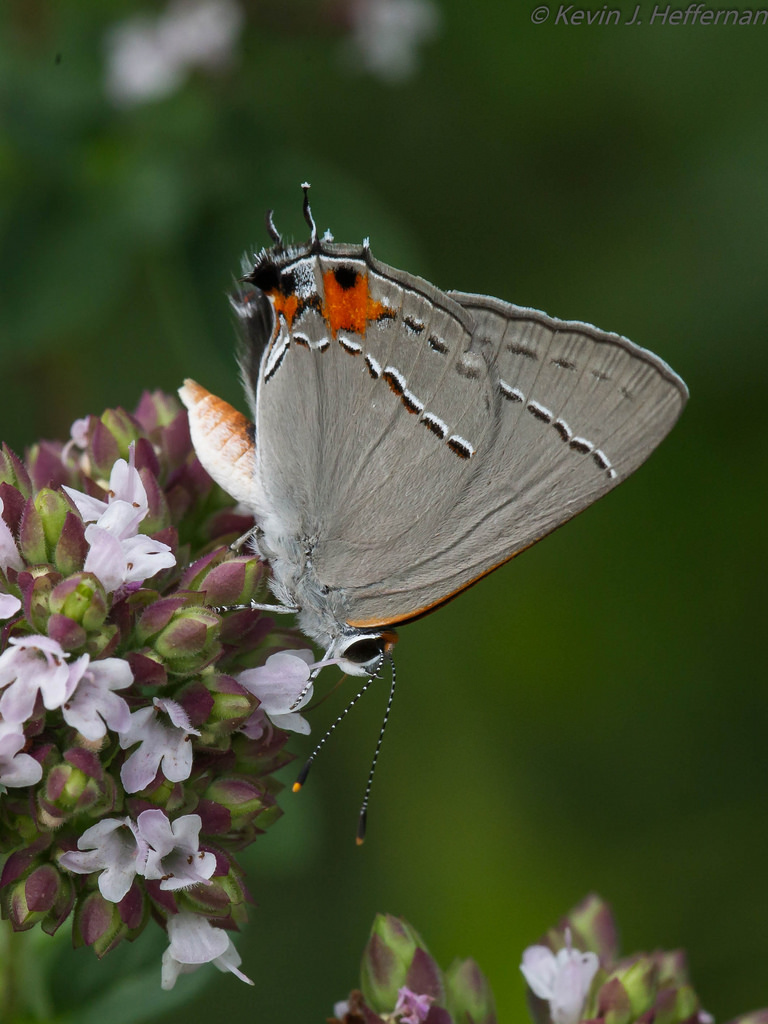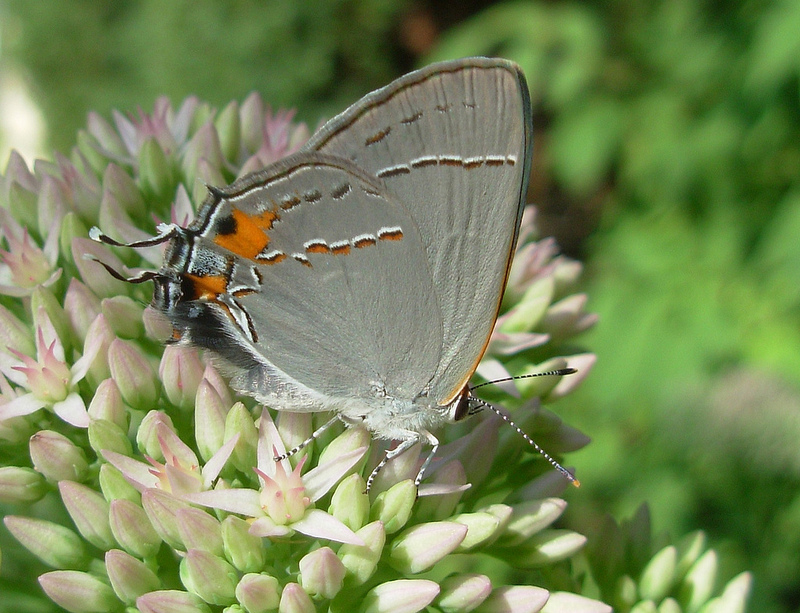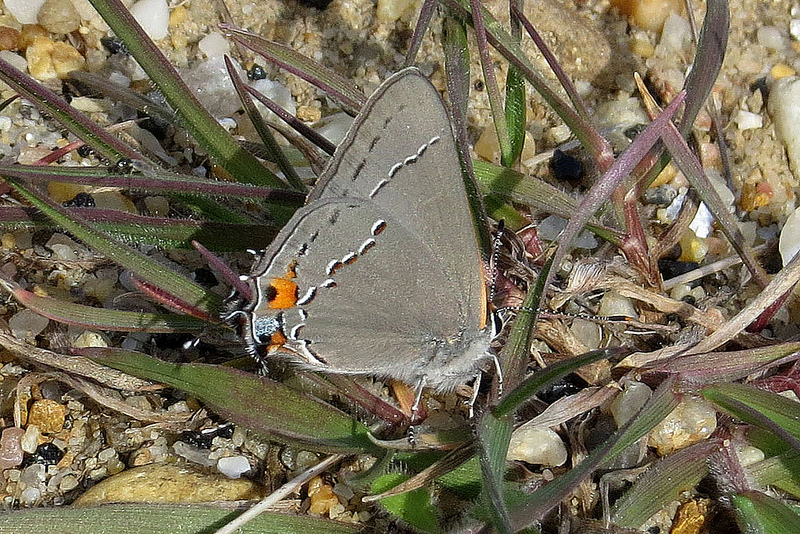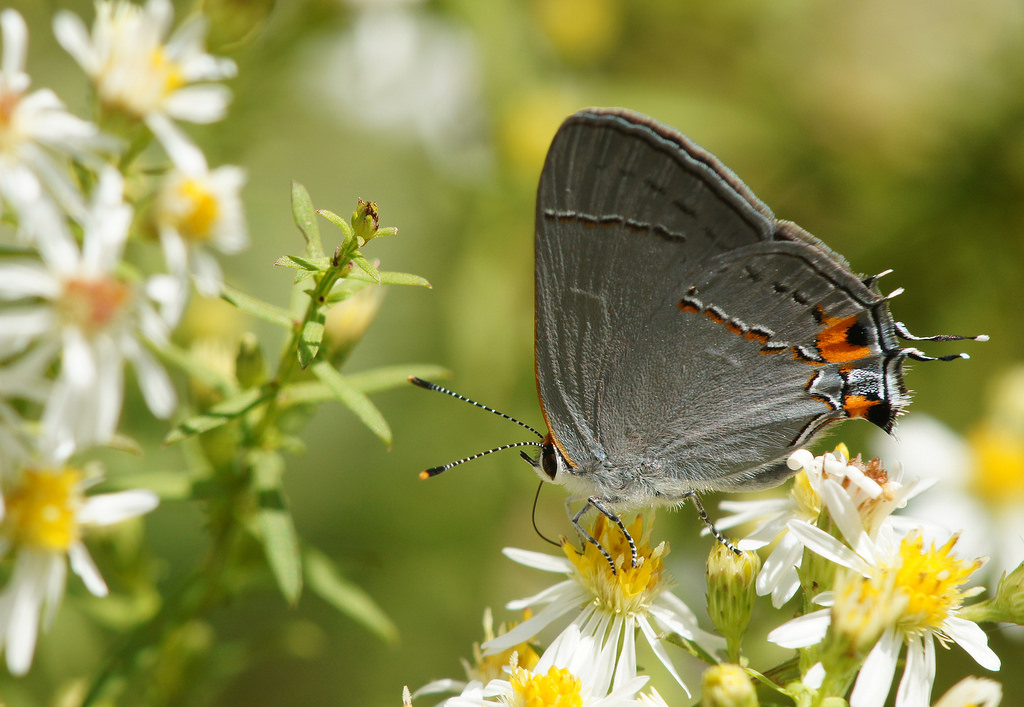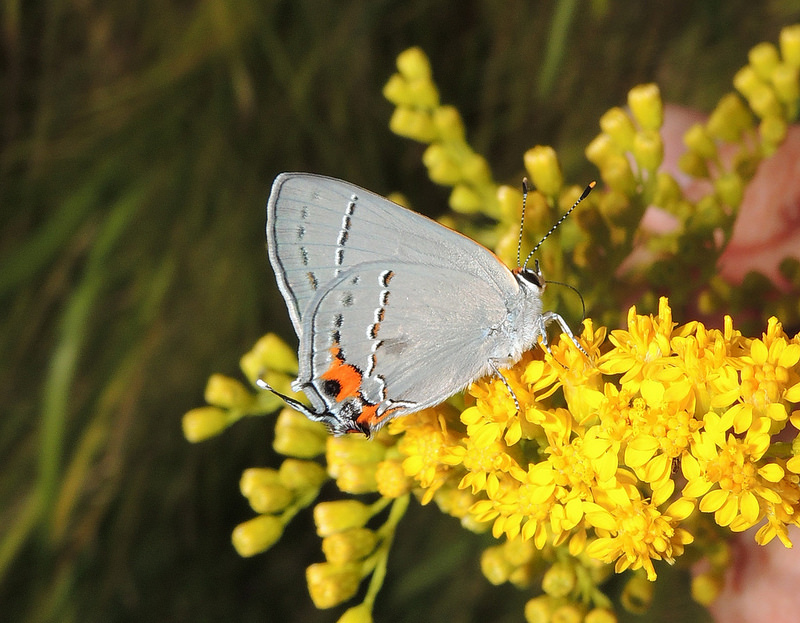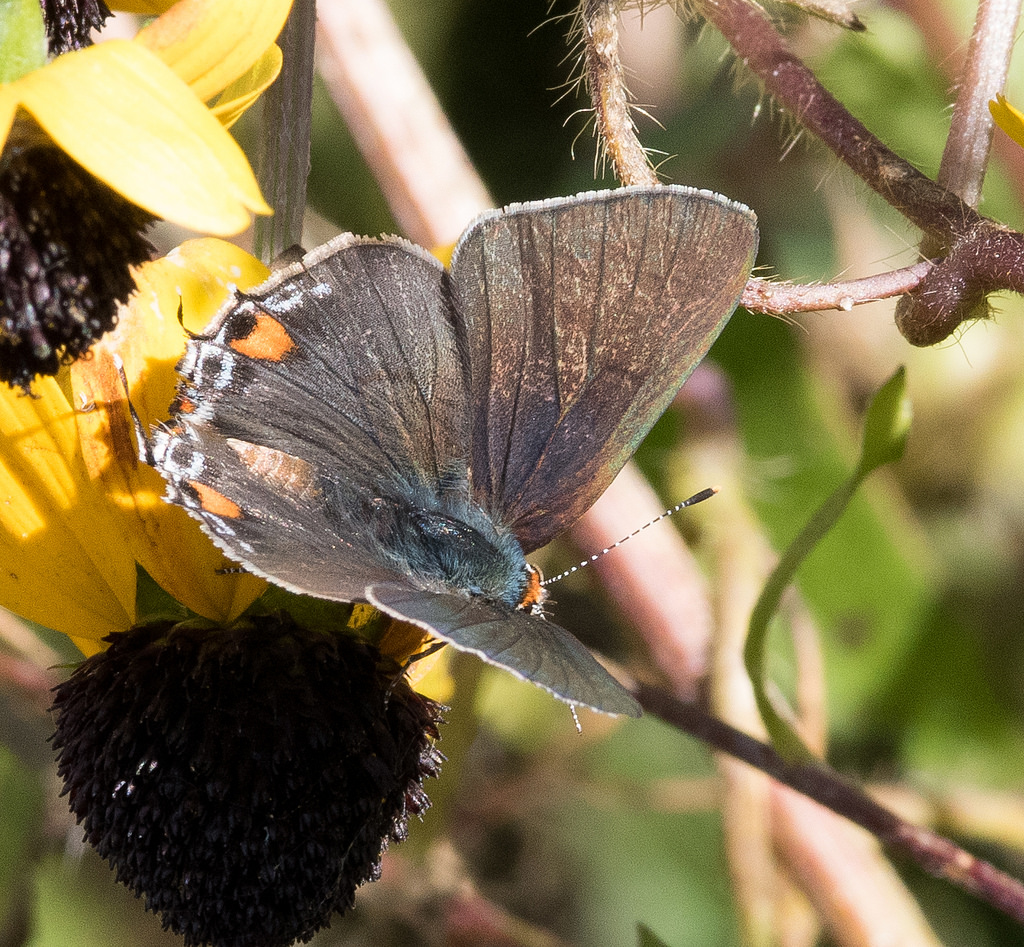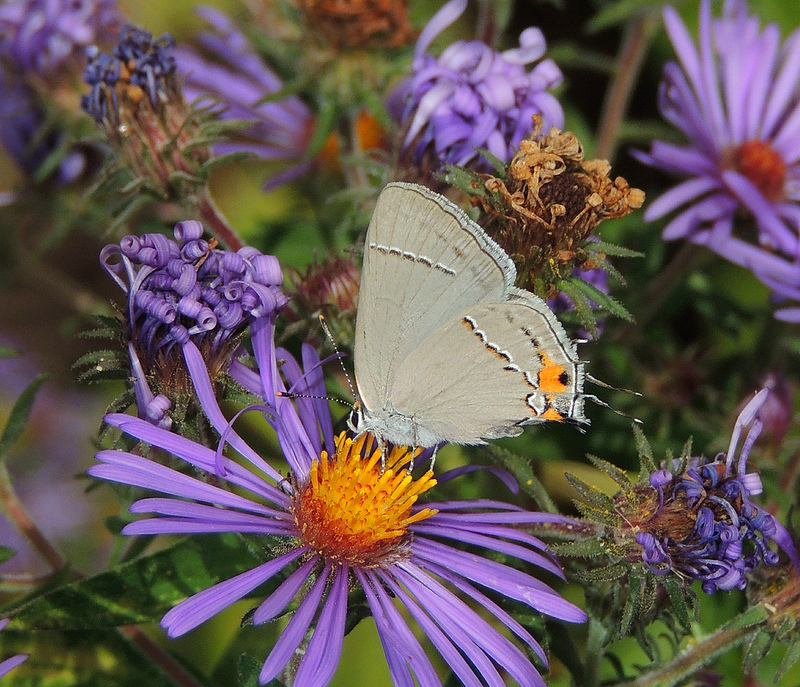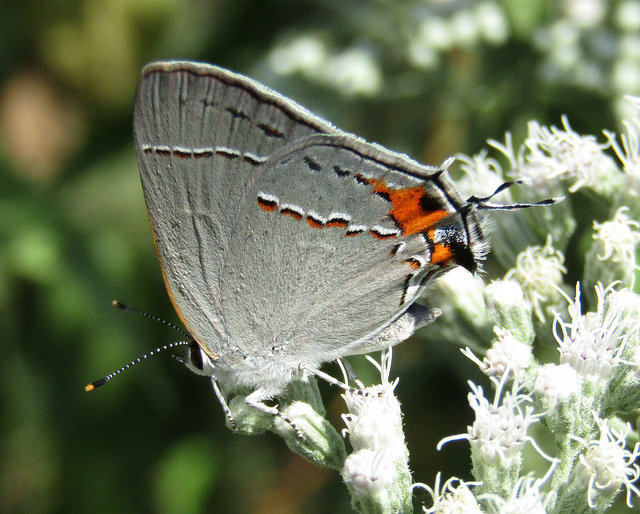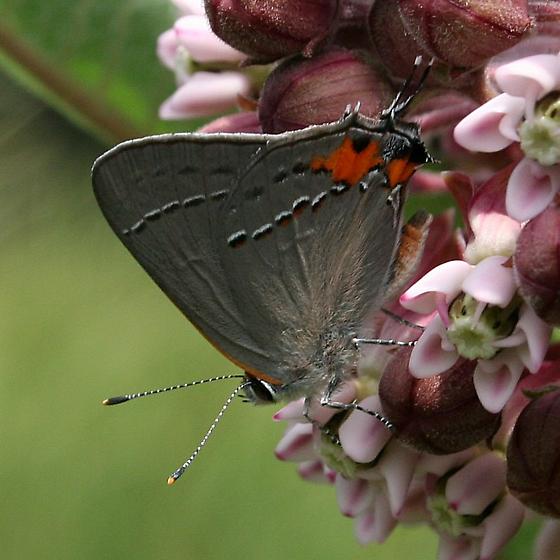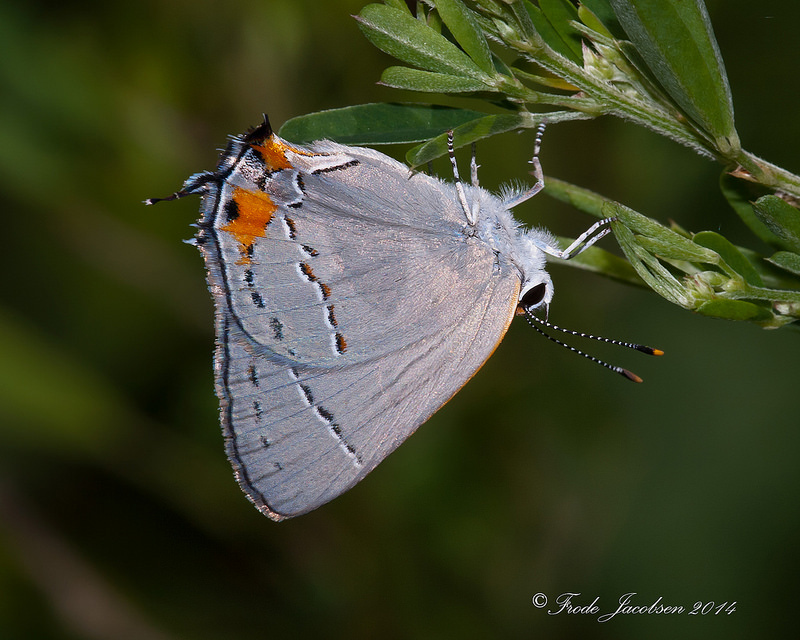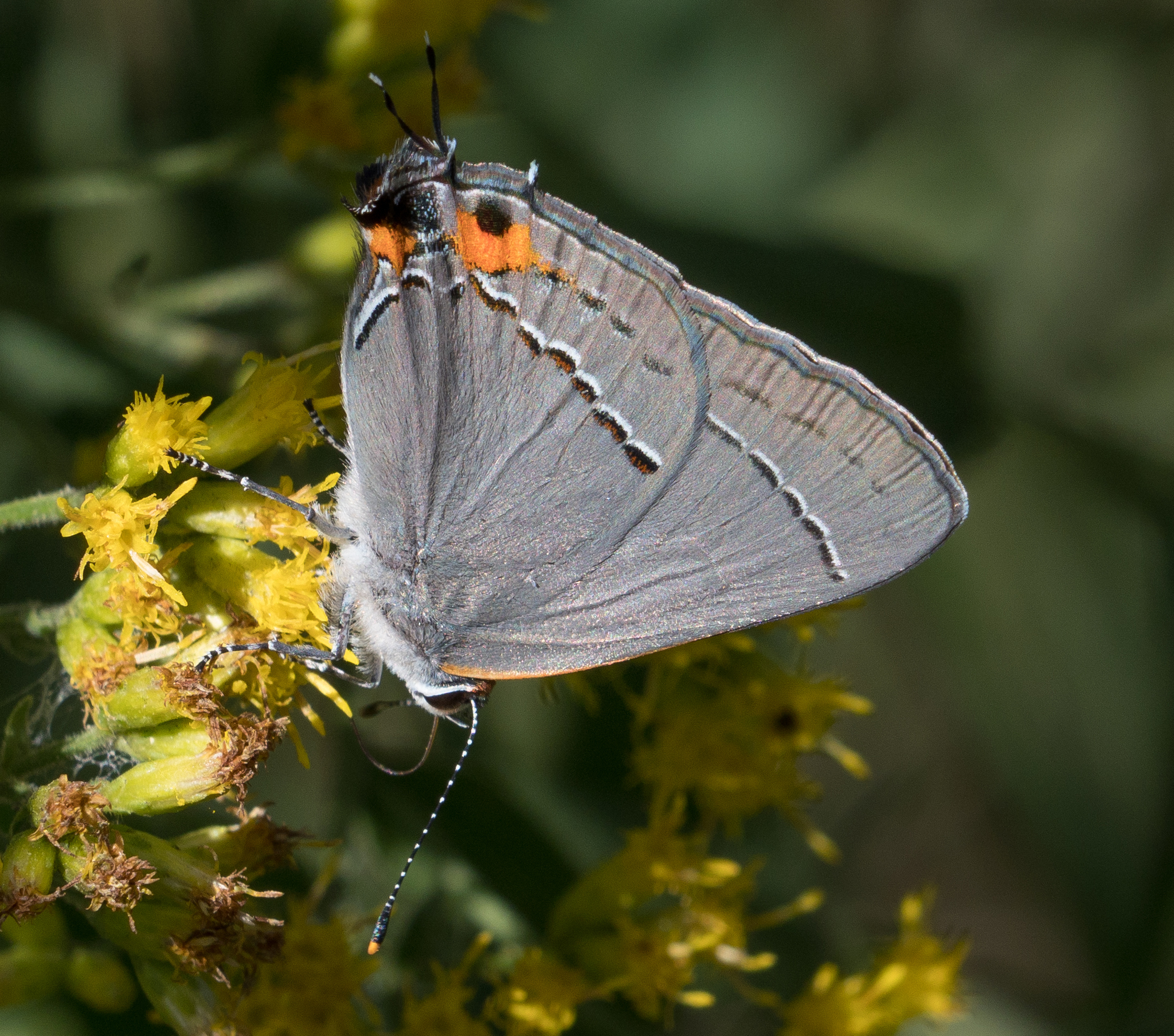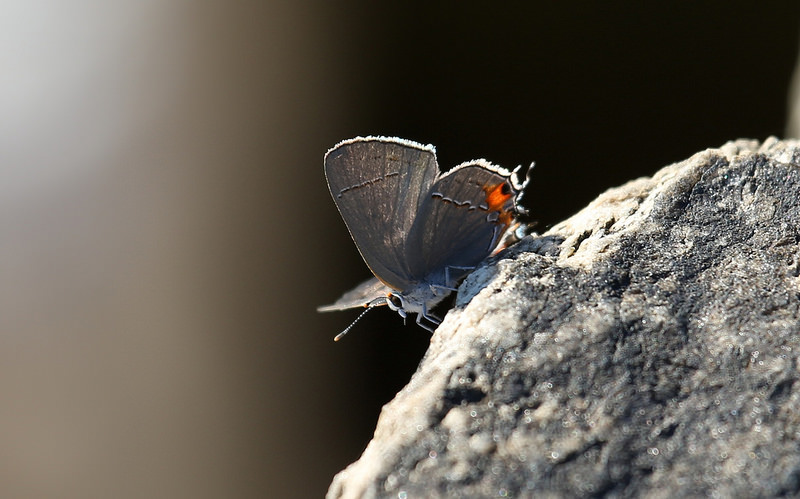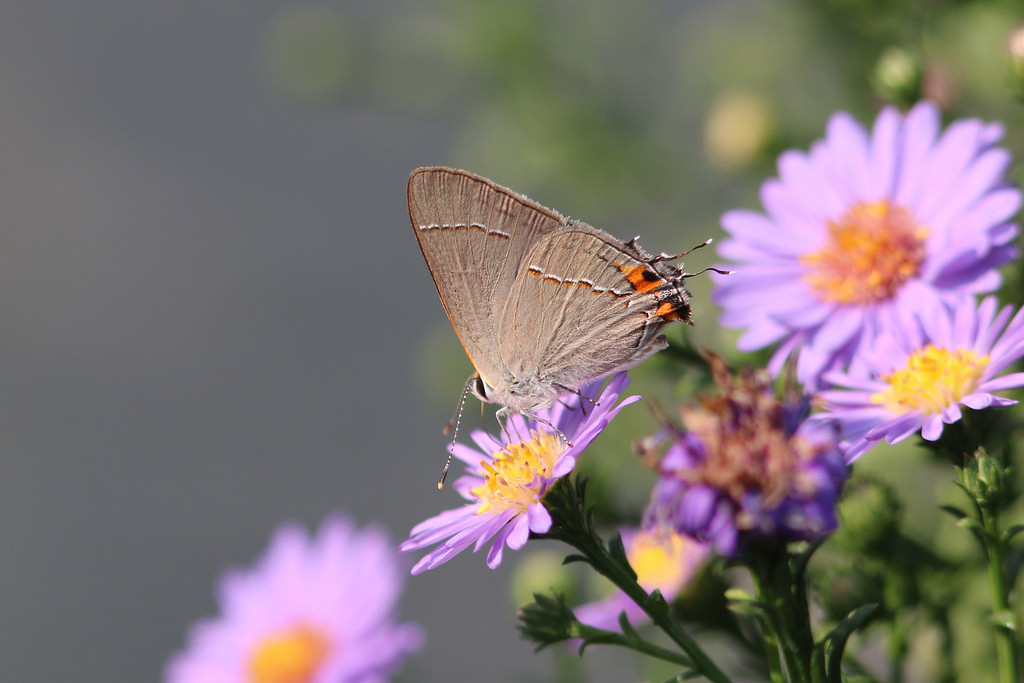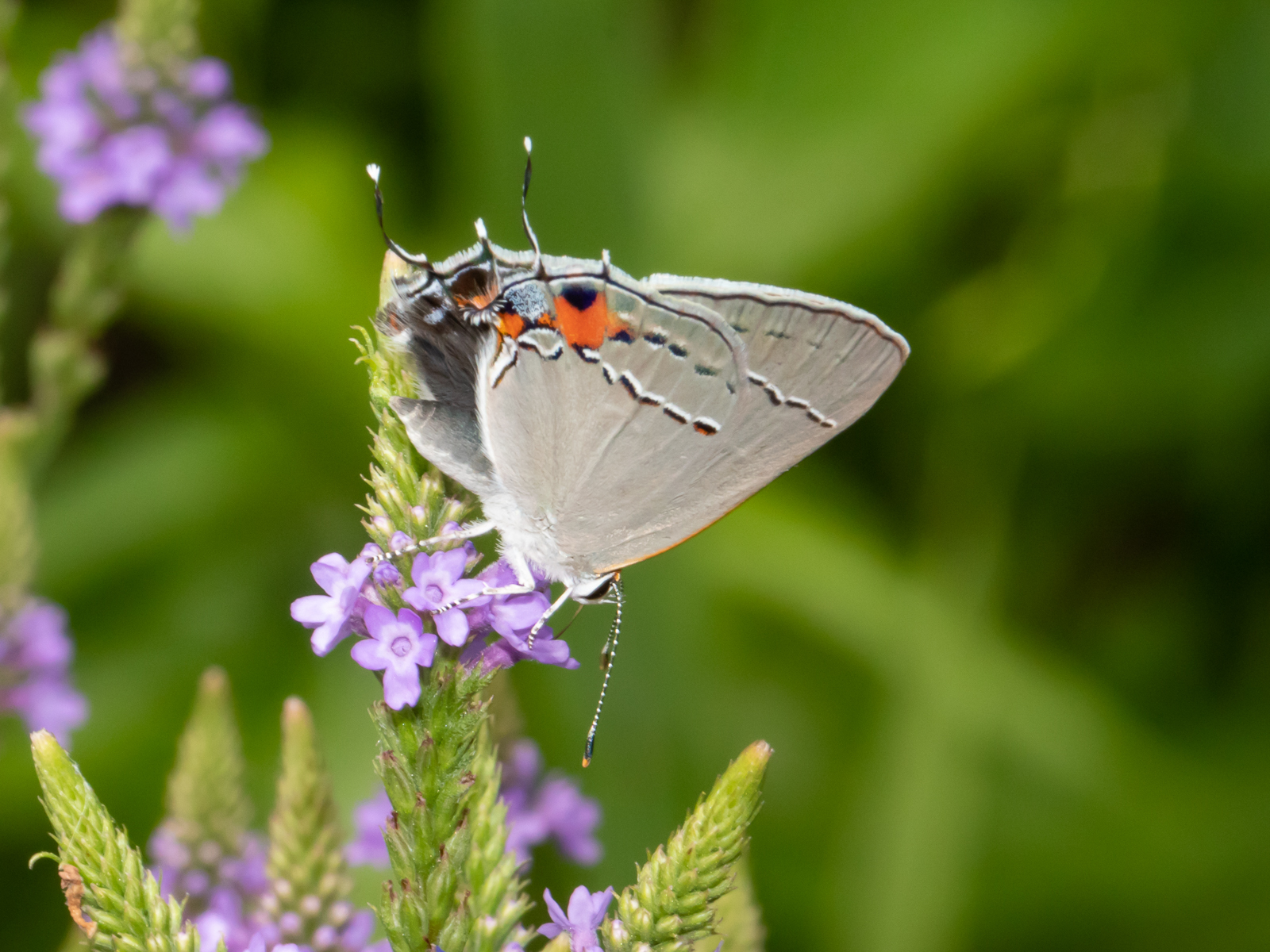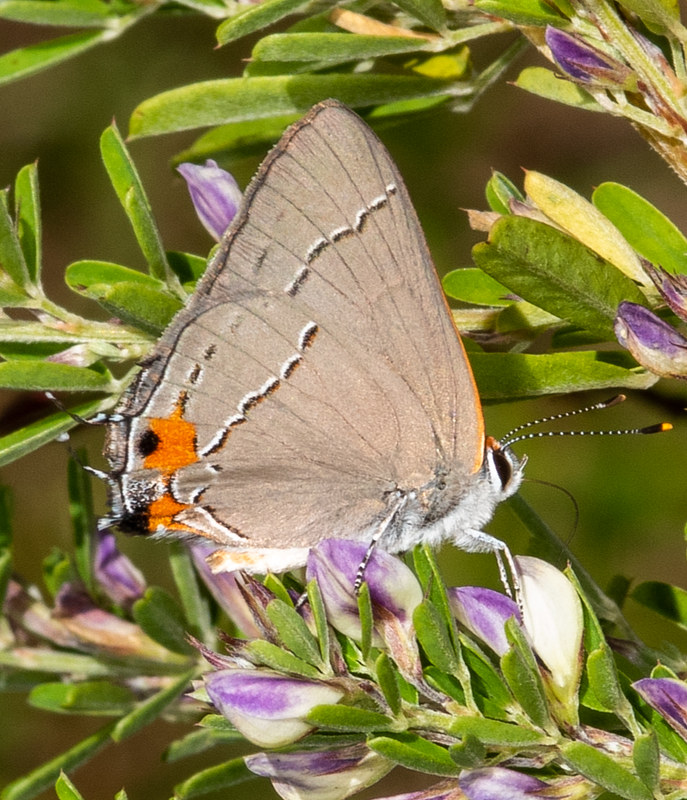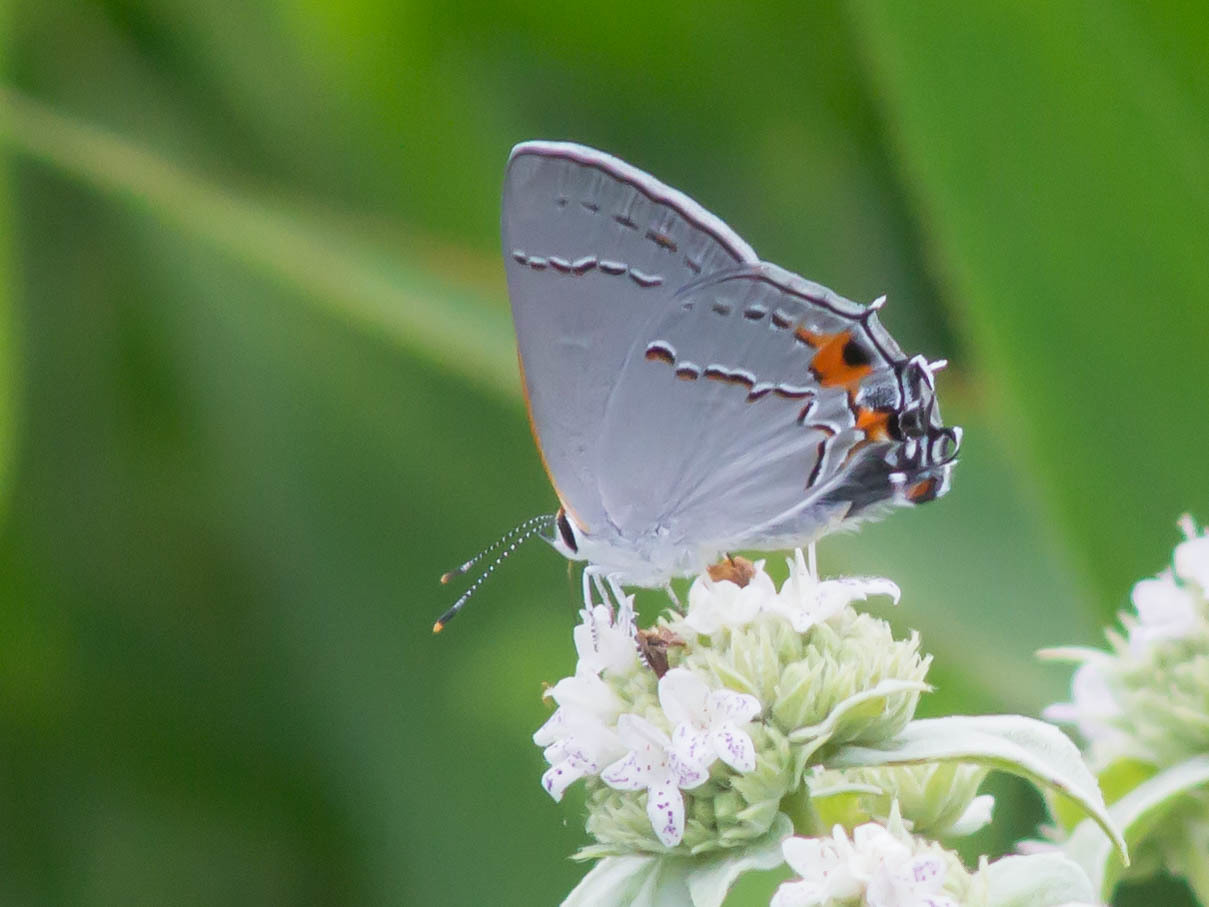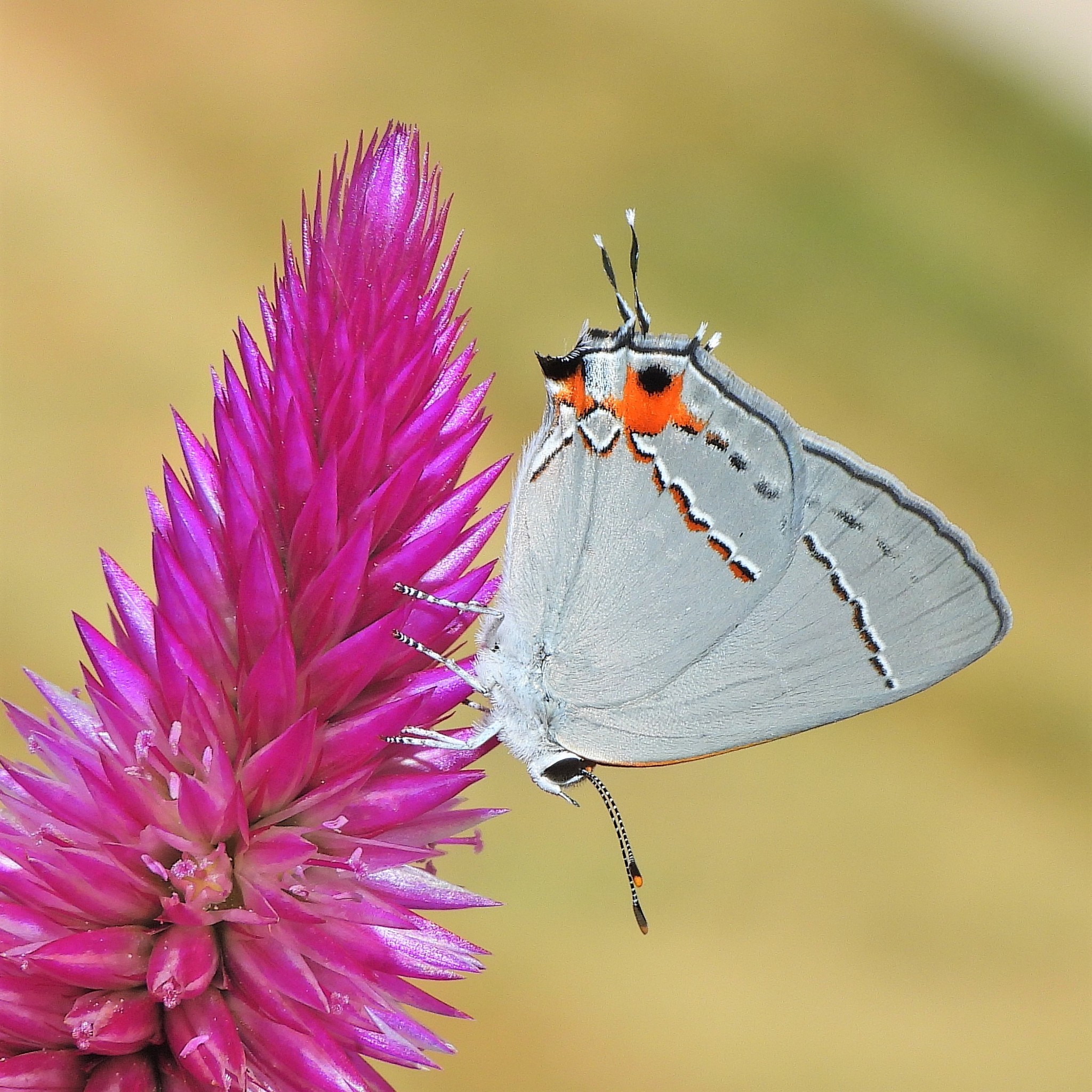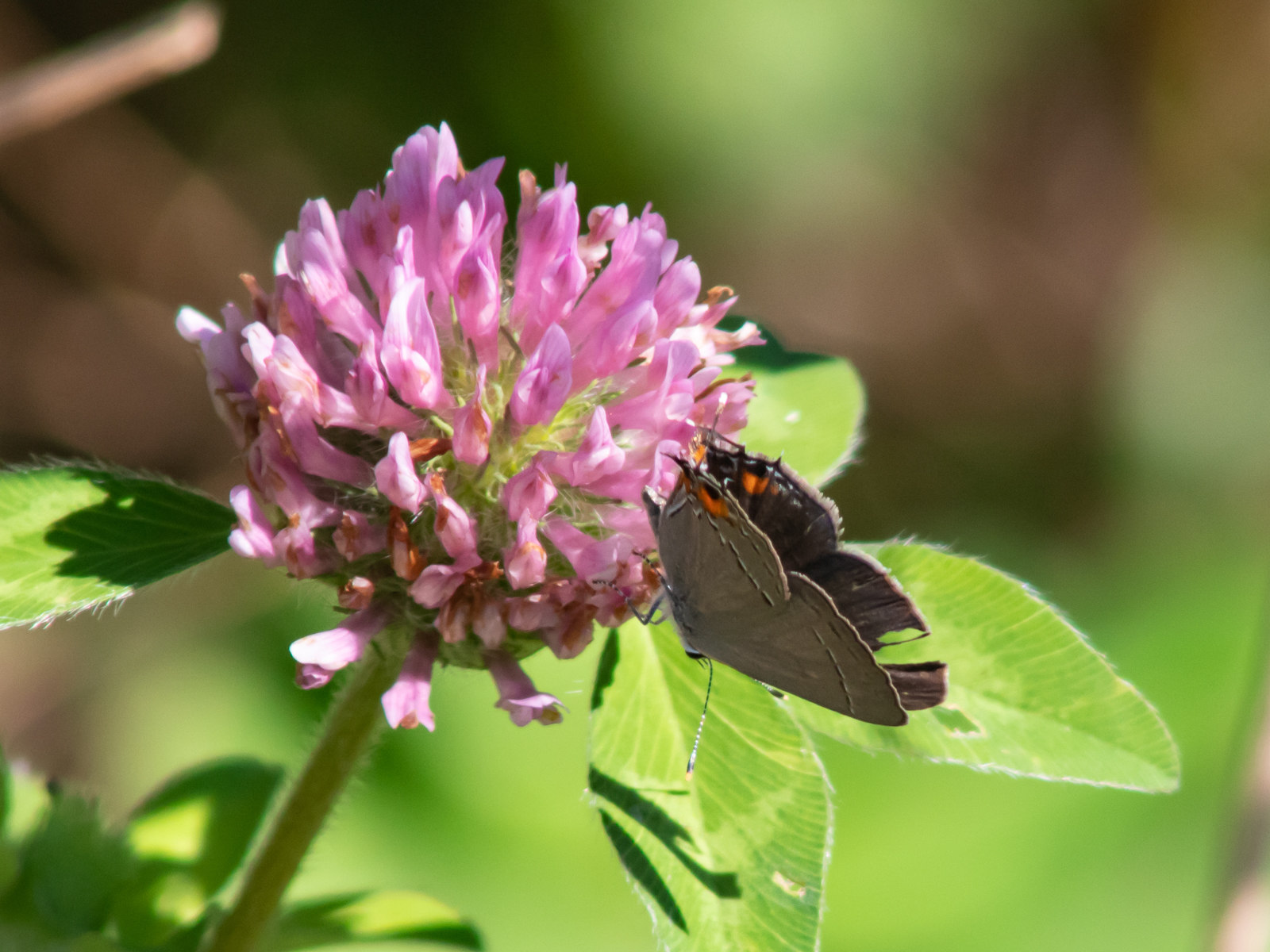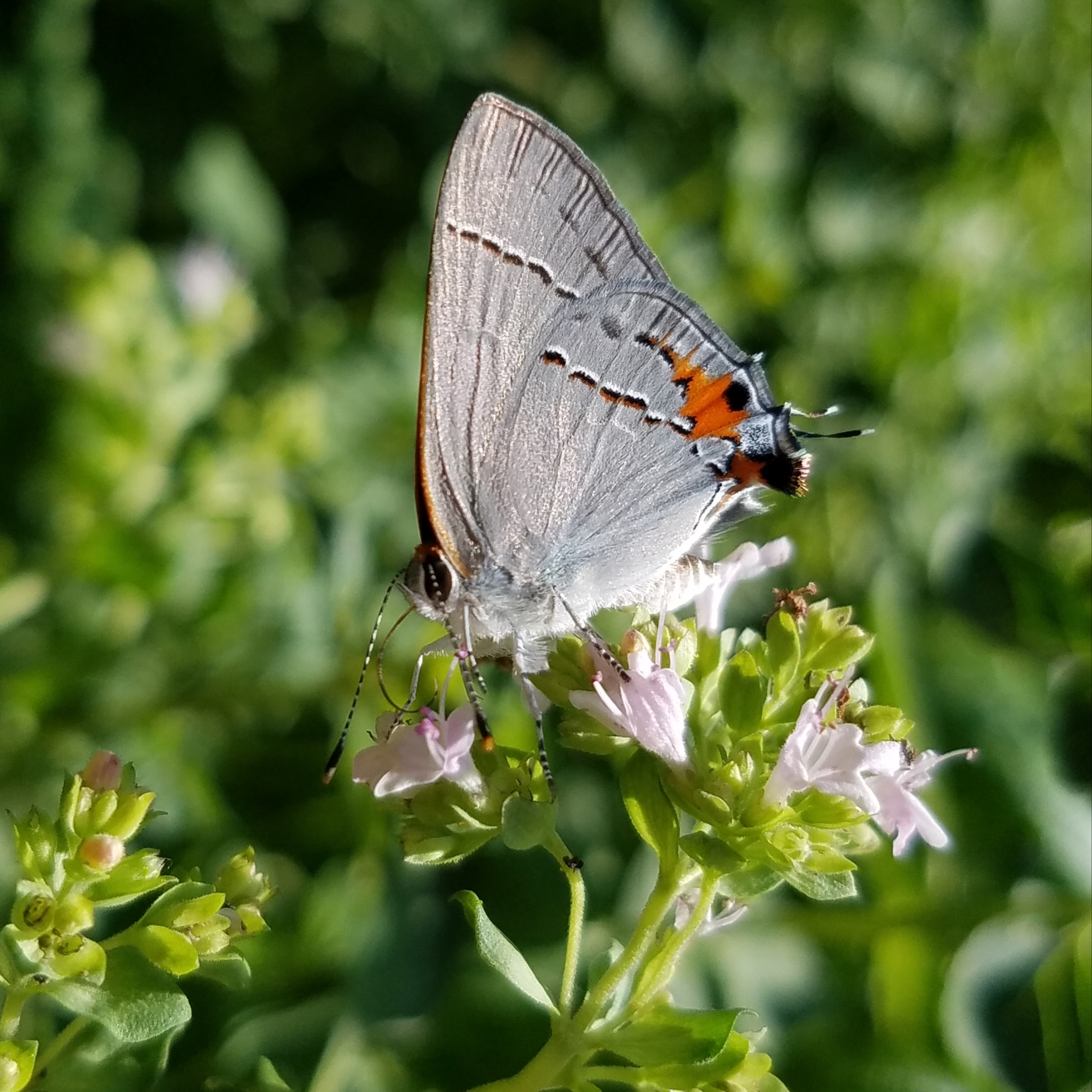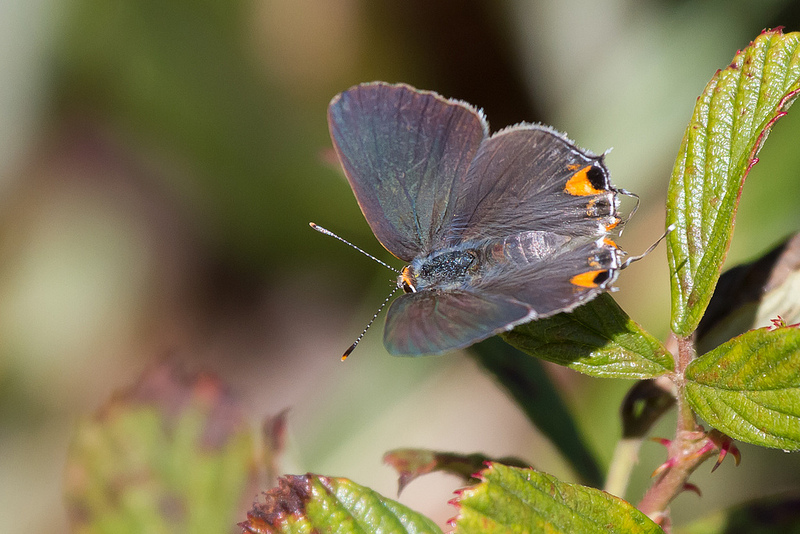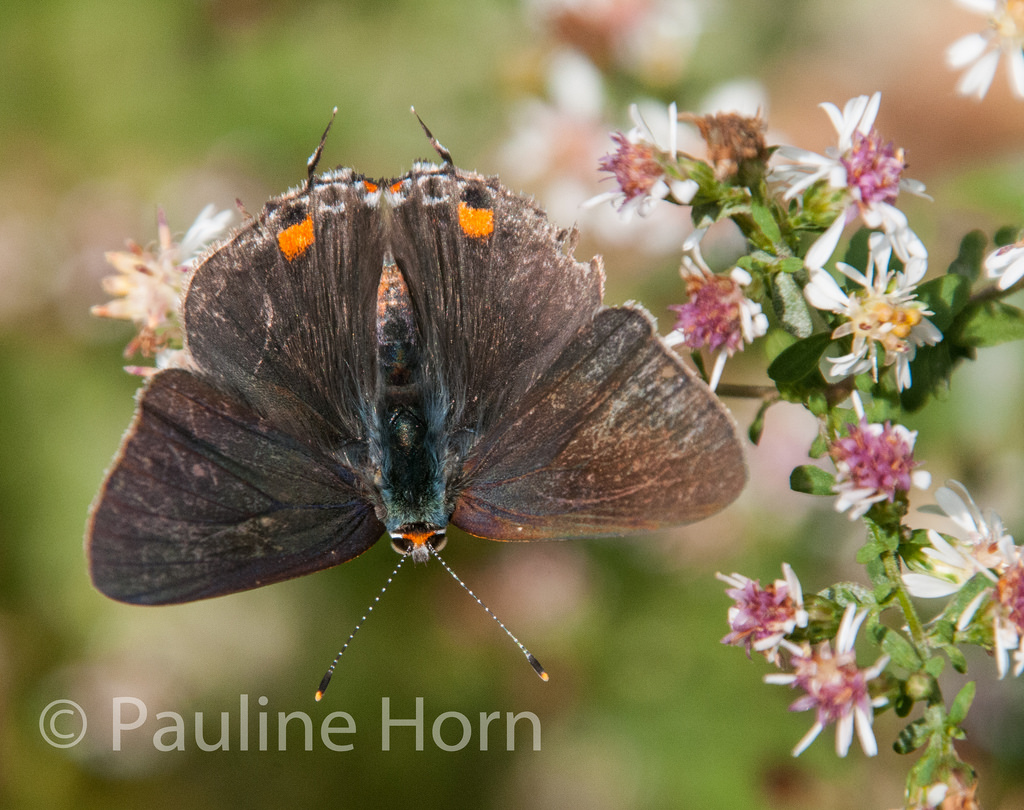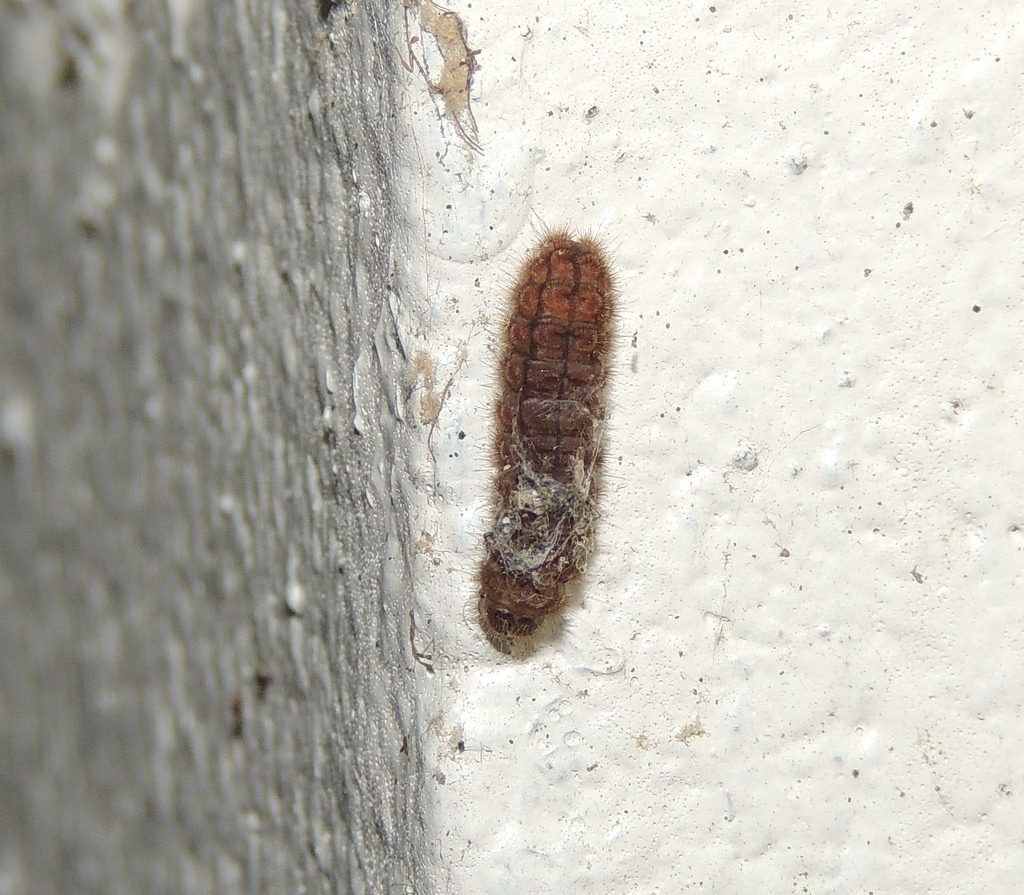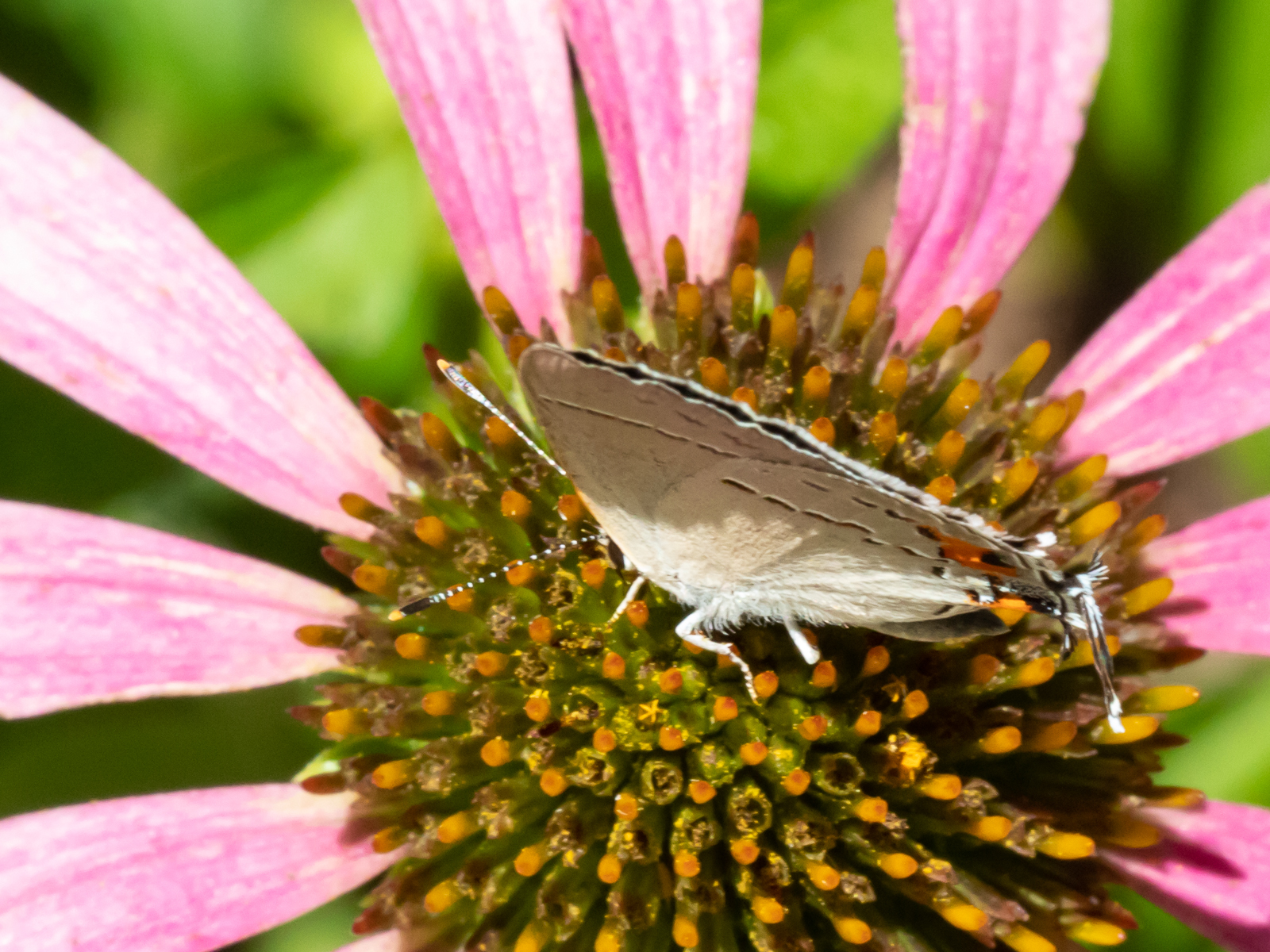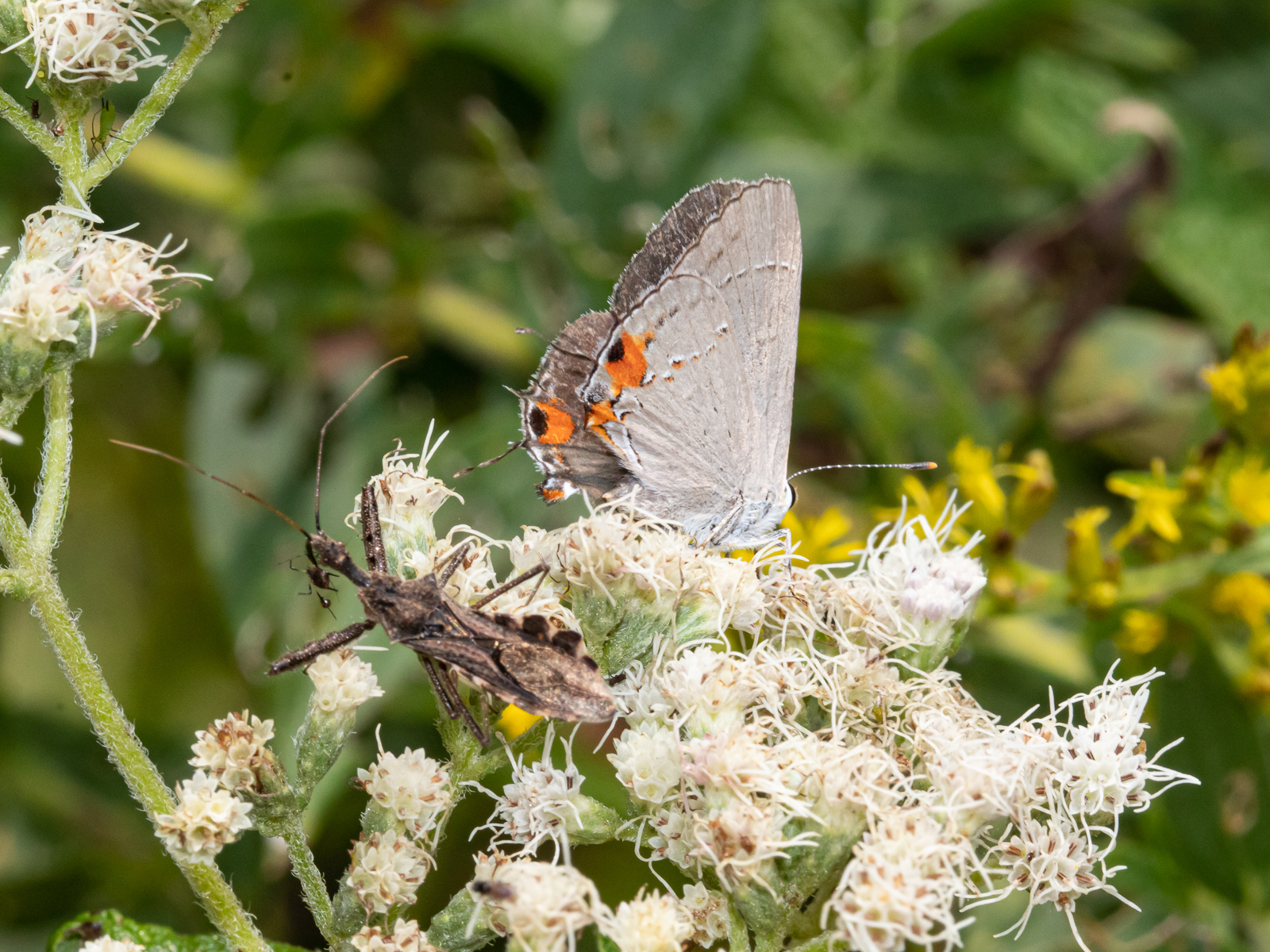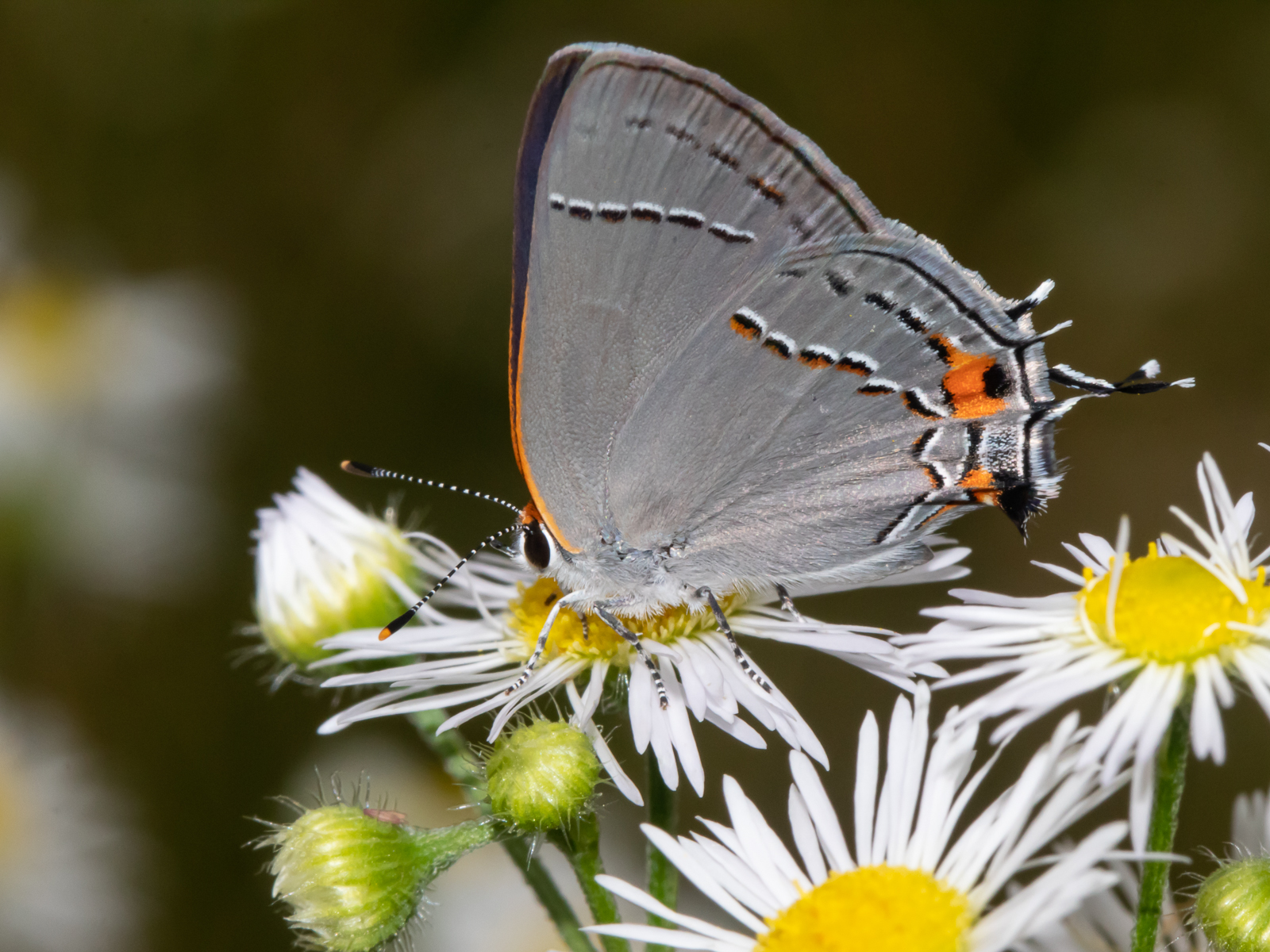Map Snapshot

























945 Records
Status
Gray Hairstreak (Strymon melinus) is probably the most widespread and familiar species of hairstreak in the east, and it ranges across Maryland. This generalist species can be found in a wide variety of habitats, from fields and deciduous woods, even urban parks or yards. It is multi-brooded, and flies from late April to early October in Maryland (Butterflies of Maryland: A Biological Summary and Checklist by Lynn Davidson & Richard Smith).
Where To Find
This species commonly visits flowers, and this can be a reliable way to locate this butterfly.
Relationships
Will utilize a wide variety of plants as larval hosts, including various legumes (Fabaceae), such as bush clovers, tick-trefoils (Desmodium, clovers (Trifolium), and vetches (Vicia), as well as members of the mallow family (Malvaceae), like Malva species (Allen, 1997).
The species has been recorded from well over one hundred species of host plants across a large range of families (Database of the World's Lepidopteran Hostplants).
Seasonality Snapshot
Source: Wikipedia
| Gray hairstreak | |
|---|---|

| |
| Scientific classification | |
| Domain: | Eukaryota |
| Kingdom: | Animalia |
| Phylum: | Arthropoda |
| Class: | Insecta |
| Order: | Lepidoptera |
| Family: | Lycaenidae |
| Genus: | Strymon |
| Species: | S. melinus
|
| Binomial name | |
| Strymon melinus Hübner (1818)
| |
| Synonyms | |
|
Thecla melinus[2] | |
The gray hairstreak (Strymon melinus) is also called the bean lycaenid or cotton square borer. It is a member of the Lycaenidae family, known as the gossamer-winged butterflies and the second-largest family of butterflies. It is one of the most common hairstreaks in North America, ranging over nearly the entire continent. It also occurs throughout Central America and in northern South America.
General Description
[edit]The adult gray hairstreak has a wingspan of 20–32 millimetres (0.79–1.26 in). The upper sides of the wings are gray with an orange spot on the hind margin. The underside of the wings are a lighter gray with white and black lines and orange and blue marginal spots near the hind-wings' tail-like extensions.[3] These extensions twitch while at rest, and may imitate a separate head to encourage predators to go for the wings, potentially allowing the bug to survive.
Caterpillars are green with markings on the sides, covered in short yellow hairs.[3] Like other caterpillars in the Lycaenidae family, S. melinus are attended by ants in a behavior known as myrmecophily.[4]

Habitat
[edit]The gray hairstreak lives in a wide range of habitats ranging from tropical forests and mountains to temperate woodland areas and meadows, as well as cities and farmland.[3][5]
Food
[edit]The caterpillars of the gray hairstreak butterfly consume a wide range of food plants.[3] However, they do mainly use mallows and legumes as their preferred host plant. They commonly use clovers as their food plant as well, eating rabbit-foot clover (Trifolium arvense), white clover (T. repens), bush clover (Lespedeza capitata), white sweet-clover (Melilotis alba), and Malva neglecta. Young caterpillars are typically found eating flowers and fruiting bodies of their host plant while the older caterpillars eat the leaves.[6]
Notes
[edit]- ^ "NatureServe Explorer 2.0 Strymon melinus Gray Hairstreak". explorer.natureserve.org. Retrieved 3 October 2020.
- ^ "Butterflies of Mexico, USA & Canada: Gray Hairstreak". Learn About Butterflies. Retrieved May 10, 2013.
- ^ a b c d Will, Kip; Gross, Joyce; Rubinoff, Daniel; Powell, Jerry A. (2020). Field Guide to California Insects. Oakland, California: University of California Press. p. 408. ISBN 9780520288744.
- ^ Ikenaga, Nobuhiro; Touyama, Yoshifumi; Kameyama, Takeshi; Ito, Fuminori (March 2020). "Effects of Argentine ants (Hymenoptera: Formicidae) on myrmecophilous lycaenid butterfly, Narathura bazalus (Lepidoptera: Lycaenidae), in western Japan". Entomological Science. 23 (1): 69–73. doi:10.1111/ens.12396. ISSN 1343-8786.
- ^ "Gray Hairstreak (Mt. Diablo Butterflies) · iNaturalist". iNaturalist. Retrieved 2020-12-04.
- ^ "Gray Hairstreak". butterfliesofmassachusetts.net. Retrieved 2020-12-04.
External links
[edit]
